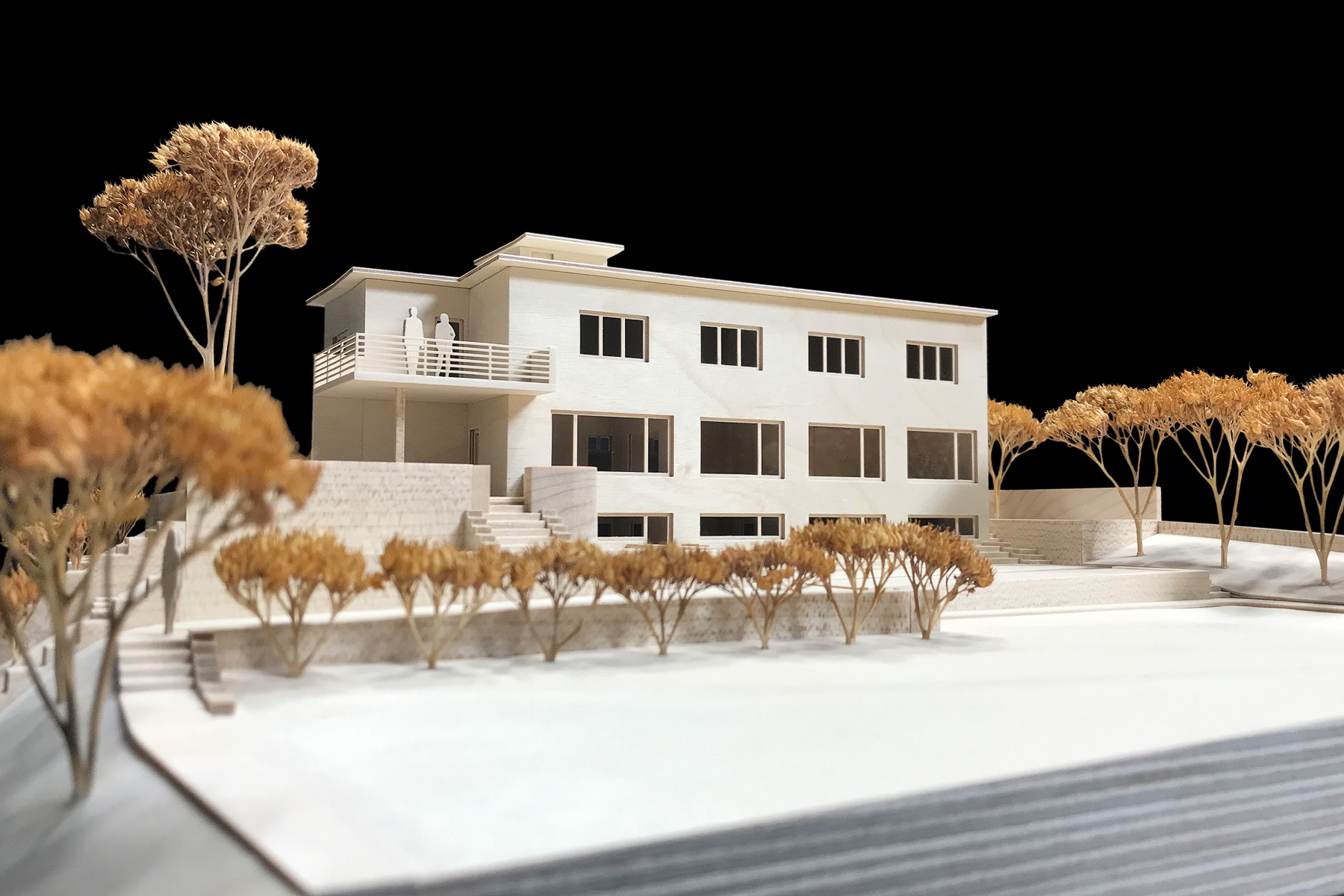Understanding the Role of an Architectural Model Maker
Overview of Responsibilities
Architectural model makers play a pivotal role in the architecture and design industry. Primarily, they create scaled representations of buildings, landscapes, and other infrastructural designs for various purposes, including presentations, exhibitions, and client meetings. Model makers are tasked with bringing architectural visions to life through intricate, detailed models that embody the designer’s intent.
Typically, an architectural model maker will undertake the following responsibilities:
- Reading and interpreting architectural drawings, blueprints, and plans to understand the design requirements.
- Selecting suitable materials for model construction, which could range from traditional wood and plastic to advanced 3D-printed components.
- Utilizing various tools and techniques to construct and finish models, ensuring they align with the specified design parameters.
- Collaborating with architects and designers throughout the project to incorporate any changes or adjustments.
- Providing insights into the structure’s feasibility and functionality through the model, thus aiding in decision-making processes.
Essential Skills and Qualifications
To excel as an architectural model maker, certain skills and qualifications are essential:
- Creativity and Artistic Ability: A strong eye for aesthetics and the ability to visualize concepts are crucial for creating engaging models.
- Attention to Detail: Precision is critical, as even minor inaccuracies can significantly alter the representation of the design.
- Technical Knowledge: Understanding construction techniques, materials, and processes enhances the quality of the models produced.
- Communication Skills: Model makers often collaborate with architects and teams; clear communication is vital for aligning on expectations.
- Proficiency in Software: Familiarity with CAD software and other design tools can streamline the model-making process.
Impact on Architectural Projects
The contributions made by an architectural model maker significantly influence the outcomes of architectural projects. Models serve as tangible manifestations of ideas, allowing clients, stakeholders, and the public to visualize the proposed designs more effectively. This visualization helps reduce ambiguity and fosters better communication among all parties involved.
Moreover, well-crafted models can enhance marketing efforts by showcasing a project’s design in a visually appealing manner during meetings, exhibitions, and community discussions. Additionally, they often pave the way for critical feedback, enabling architects to refine their designs even before the construction phase begins.
Types of Models Showcased in Exhibitions
Scale Models for Architecture
Scale models form the backbone of architectural exhibitions, representing projects at reduced sizes while still maintaining accurate proportions and details. They are commonly used to highlight new developments, renovations, and urban planning initiatives. Depending on the project, scale models can vary from simple representations to complex assemblies that include intricate details, landscaping, and contextual elements.
One notable example is the use of scale models in the architectural model maker exibition, where designers showcase their work through immersive displays that draw attention to architectural trends and innovations.
Interactive Displays for Engagement
Interactive displays represent an exciting evolution in architectural exhibitions. These models allow viewers to engage with the presentation actively, often using touchscreen technology or mobile applications to explore different aspects of the project. Such modes of interaction not only enhance user experience but also encourage deeper understanding and appreciation of the architectural designs being showcased.
In recent exhibitions, interactive displays have been utilized to simulate how a building will look in its environment, providing real-time perspectives and allowing users to adjust features such as lighting or materials. This hands-on approach shifts the paradigm from passive observation to active involvement, fostering engagement and feedback from visitors.
Technological Innovations in Model Making
The field of architectural model making has seen a substantial transformation due to technological advancements. One of the foremost innovations is the incorporation of 3D printing, which allows for the rapid production of highly detailed models at unprecedented speeds. This technology significantly reduces the time and effort required to create complex models, making it easier for architects to prototype various designs and iterate on ideas by producing multiple versions quickly.
Additionally, digital modeling tools and software, such as BIM (Building Information Modeling), enable model makers to create highly precise representations that can be easily modified as project requirements evolve. This technological synergy not only enhances the workflow but also improves collaboration among architectural stakeholders.
Planning Your Architectural Model Maker Exhibition
Choosing the Right Venue
Choosing the right venue for an architectural model making exhibition is paramount to its success. Ideal venues should embody the spirit of the displayed works while providing ample space for models and visitors to interact comfortably. Factors to consider include:
- Location: A central, accessible location can draw more attendees.
- Space: The venue should be spacious enough to accommodate multiple models without overcrowding.
- Lighting: Proper lighting enhances the visual appeal of models, making it easier for visitors to appreciate details.
- Amenities: Facilities such as seating, restrooms, and refreshment areas can significantly enhance the visitor experience.
Strategies for Effective Layout
Creating an effective layout is essential for guiding visitors through an exhibition. Consider these strategies:
- Flow: Design the space to create a natural flow, allowing visitors to move from one model to another seamlessly.
- Signage: Use clear, informative signage to provide context and information about each model.
- Interactive Areas: Create designated areas for interactive displays to encourage visitor engagement.
- Safety: Ensure that pathways are clear, and models are securely displayed to prevent accidents.
Marketing Your Exhibition
Effective marketing can significantly boost attendance and create buzz around your exhibition. Implement these strategies for success:
- Social Media Campaigns: Use platforms like Instagram and Facebook to showcase models and generate interest prior to the event.
- Partnerships: Collaborate with local architectural schools, firms, and organizations to promote the event through their networks.
- Press Releases: Send out press releases to local media outlets to cover the event and attract a broader audience.
- Email Newsletters: Utilize existing mailing lists to inform potential visitors about the exhibition and its highlights.
Useful Tips for Visitors to Architectural Model Exhibitions
What to Look for in a Model
Visitors to architectural model exhibitions should be attuned to various elements when evaluating models. Key factors include:
- Detailing: Look for intricate features that showcase the model maker’s skills and dedication to the project.
- Accuracy: Assess whether the model effectively represents the architectural plans and concepts.
- Material Choice: Consider the materials used in the model’s construction, as they can affect both aesthetics and durability.
- Contextual Representation: Evaluate how well the model depicts its surroundings and integrates with the overall design narrative.
How to Engage with Exhibitors
Engaging with exhibitors can enrich the visiting experience. Here are ways to do so effectively:
- Ask Questions: Inquire about the design process, challenges faced, and inspirations behind the models.
- Request Demonstrations: Don’t hesitate to ask if the exhibitor can demonstrate certain features or aspects of the models.
- Gather Brochures or Material: Collect any informational resources to better understand the body of work being presented.
- Provide Feedback: Share your impressions and any insightful comments that may be beneficial to the exhibitors.
Networking Opportunities
Architectural model exhibitions serve as excellent networking platforms. To maximize networking opportunities:
- Participate in Workshops: Engage in any workshops or talks held during the exhibition for firsthand knowledge and interaction.
- Exchange Contacts: Bring business cards to share with exhibitors and other attendees.
- Follow Up: After the event, reach out to new contacts via email or social media to solidify connections and explore collaborative opportunities.
Future Trends in Architectural Model Making
Integration of Virtual Reality
The future of architectural model making is poised to embrace virtual reality (VR) technology, transforming how models are experienced. VR enables users to immerse themselves in the architectural space and gain insights into designs in a way that physical models cannot replicate. This immersive experience helps stakeholders visualize how spaces will function and look once completed, facilitating better design modifications and validation before construction begins.
Sustainability in Model Materials
As sustainability becomes a priority in architecture and design, model makers are turning to eco-friendly materials to create their representations. From biodegradable plastics to recycled materials, the emphasis is on reducing the environmental impact of model making while still achieving high-quality outcomes. This trend aligns with broader industry goals to promote sustainability and responsible design practices.
Global Influence of Architectural Exhibitions
Architecture exhibitions are increasingly recognizing their global influence, showcasing works and ideas from a diverse range of cultures and perspectives. As these exhibitions become more accessible through advancements in digital technology and touring models, there is a growing opportunity for cross-cultural dialogue and collaboration. This inclusivity fosters innovation and can lead to the emergence of new architectural styles and philosophies that appreciate the richness of global design.



